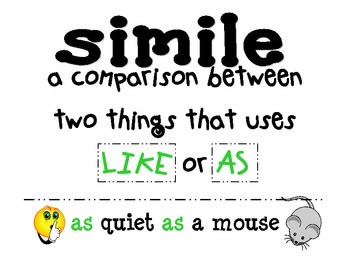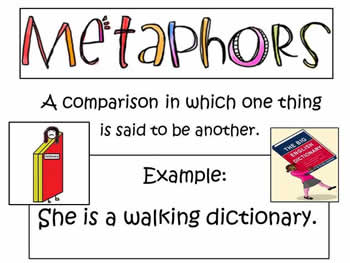Difference between Simile and Metaphor
Key Difference: Both Simile and Metaphor are two different ways to make comparisons, however, the manner they do it in differs. The primary difference between their comparisons is that while metaphor correlates two unrelated things, a simile compares two or more things by directly and obviously making a correlation using certain words to link them.
 English is a confusing language. It has many various articles of speech all of which may be difficult to tell apart. Simile and Metaphor are two such articles of speech. Both are commonly used to make comparisons, which makes them even more confusing. While it may seem like they are the same as they serve the same purpose, it is not the truth. In actuality, they are different and are used in different concepts.
English is a confusing language. It has many various articles of speech all of which may be difficult to tell apart. Simile and Metaphor are two such articles of speech. Both are commonly used to make comparisons, which makes them even more confusing. While it may seem like they are the same as they serve the same purpose, it is not the truth. In actuality, they are different and are used in different concepts.
A simile is primarily used to make direct comparisons. It can be easy to tell a simile apart as it uses the words ‘as’ and ‘like’ to make the said comparisons. A simile directly compares one thing to another, such as a person, an object, or even a situation. While the works ‘like’ and ‘as’ are more popularly used, a simile can also use words such as ‘so’, ‘than’, or various verbs such as ‘resemble’, etc.
Similarly, a metaphor is also primarily used to make comparisons. However, while a simile makes direct comparisons, a metaphor makes indirect comparisons. It is often used to compare things that typically have nothing to do with each other. For example: ‘All the world's a stage’ is a famously citied metaphor by Shakespeare. Here, he is comparing the world with a play’s stage. The two things traditionally have nothing to do with each other, but he is comparing them nonetheless to make a point, which is that the world is a stage and that people are all players, i.e. actors who are putting on a play.
 As it can be seen, both Simile and Metaphor are two different ways to make comparisons, however, the manner they do it in differs. The primary difference between their comparisons is that while metaphor correlates two unrelated things, a simile compares two or more things by directly and obviously making a correlation using certain words to link them.
As it can be seen, both Simile and Metaphor are two different ways to make comparisons, however, the manner they do it in differs. The primary difference between their comparisons is that while metaphor correlates two unrelated things, a simile compares two or more things by directly and obviously making a correlation using certain words to link them.
Hence, it can in fact also be said that a simile is in fact a type of metaphor as it compares two things; however it does so it in particular manner, such as by using words such as ‘as’, ‘like’, ‘so’, ‘than’, ‘resemble’, etc.
Comparison between Simile and Metaphor:
|
|
Simile |
Metaphor |
|
Definition (Oxford Dictionaries) |
A figure of speech involving the comparison of one thing with another thing of a different kind, used to make a description more emphatic or vivid (e.g. as brave as a lion). The use of similes as a method of comparison. |
A figure of speech in which a word or phrase is applied to an object or action to which it is not literally applicable. A thing regarded as representative or symbolic of something else. |
|
Description |
A simile compares two or more things by directly and obviously making a correlation using certain words to link them, such as ‘as’, ‘like’, ‘so’, ‘than’, ‘resemble’, etc. |
A Metaphor correlates two unrelated things by making an indirect comparison between them to create an image or to illustrate a point or idea. |
|
Comparison |
Direct comparison |
Indirect comparison |
|
Effect |
Simple |
More complex |
|
Uses |
Like, as |
No direct correlation |
|
Examples |
|
|
Reference: Oxford Dictionaries (Simile and Metaphor), Wikipedia (Simile and Metaphor), YourDictionary.com (Simile and Metaphor), Pediaa Image Courtesy: teacherspayteachers.com, mrswarnerarlington.weebly.com









Add new comment